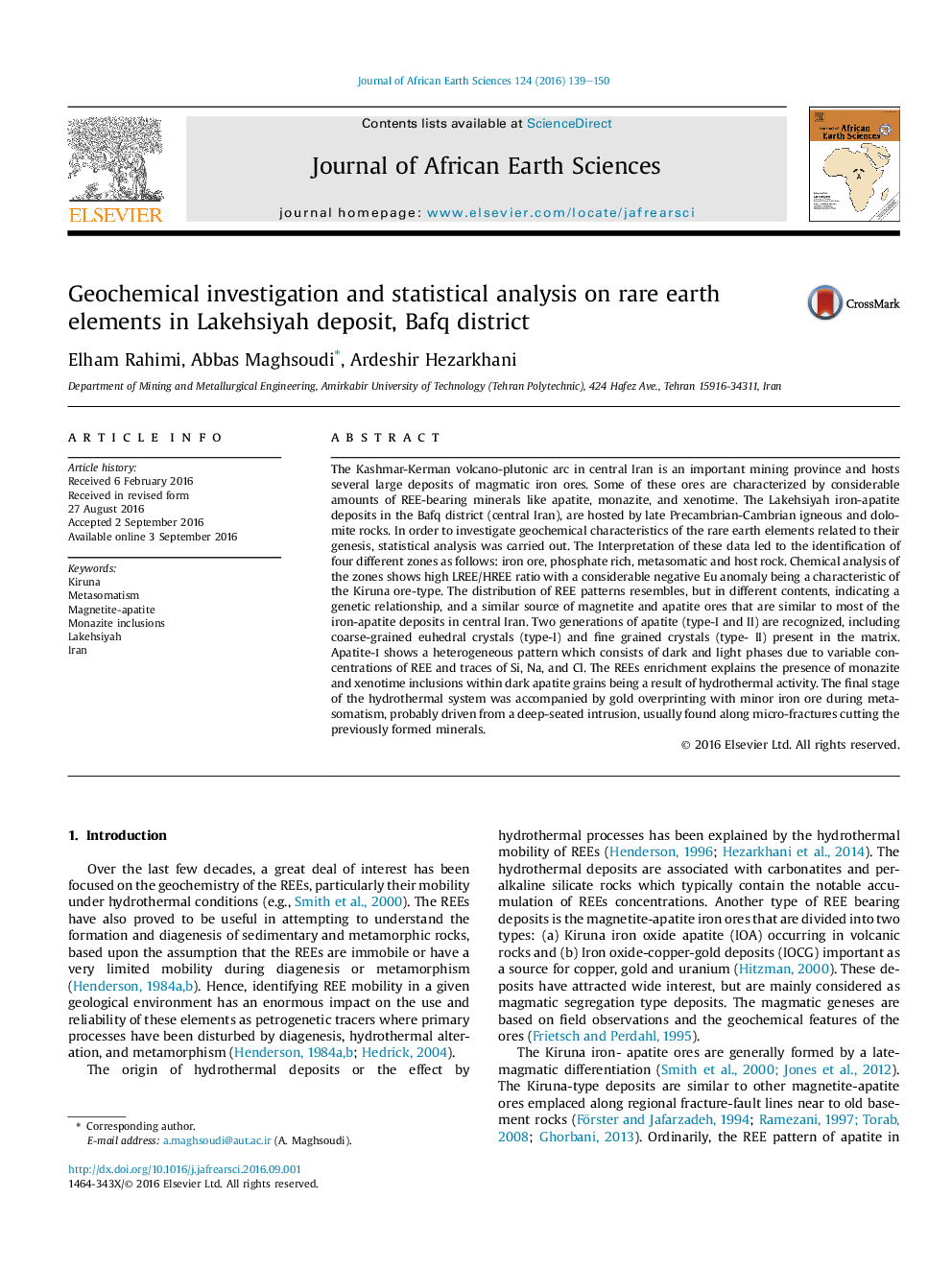| کد مقاله | کد نشریه | سال انتشار | مقاله انگلیسی | نسخه تمام متن |
|---|---|---|---|---|
| 4728137 | 1640184 | 2016 | 12 صفحه PDF | دانلود رایگان |
• Lakehsiyah is very similar to Kiruna type with relatively high LREE/HREE.
• High correlation between REE with phosphate.
• The heterogenic pattern including dark and light phases shows that REE mineral inclusions enriched in dark phases.
The Kashmar-Kerman volcano-plutonic arc in central Iran is an important mining province and hosts several large deposits of magmatic iron ores. Some of these ores are characterized by considerable amounts of REE-bearing minerals like apatite, monazite, and xenotime. The Lakehsiyah iron-apatite deposits in the Bafq district (central Iran), are hosted by late Precambrian-Cambrian igneous and dolomite rocks. In order to investigate geochemical characteristics of the rare earth elements related to their genesis, statistical analysis was carried out. The Interpretation of these data led to the identification of four different zones as follows: iron ore, phosphate rich, metasomatic and host rock. Chemical analysis of the zones shows high LREE/HREE ratio with a considerable negative Eu anomaly being a characteristic of the Kiruna ore-type. The distribution of REE patterns resembles, but in different contents, indicating a genetic relationship, and a similar source of magnetite and apatite ores that are similar to most of the iron-apatite deposits in central Iran. Two generations of apatite (type-I and II) are recognized, including coarse-grained euhedral crystals (type-I) and fine grained crystals (type- II) present in the matrix. Apatite-Ι shows a heterogeneous pattern which consists of dark and light phases due to variable concentrations of REE and traces of Si, Na, and Cl. The REEs enrichment explains the presence of monazite and xenotime inclusions within dark apatite grains being a result of hydrothermal activity. The final stage of the hydrothermal system was accompanied by gold overprinting with minor iron ore during metasomatism, probably driven from a deep-seated intrusion, usually found along micro-fractures cutting the previously formed minerals.
Journal: Journal of African Earth Sciences - Volume 124, December 2016, Pages 139–150
